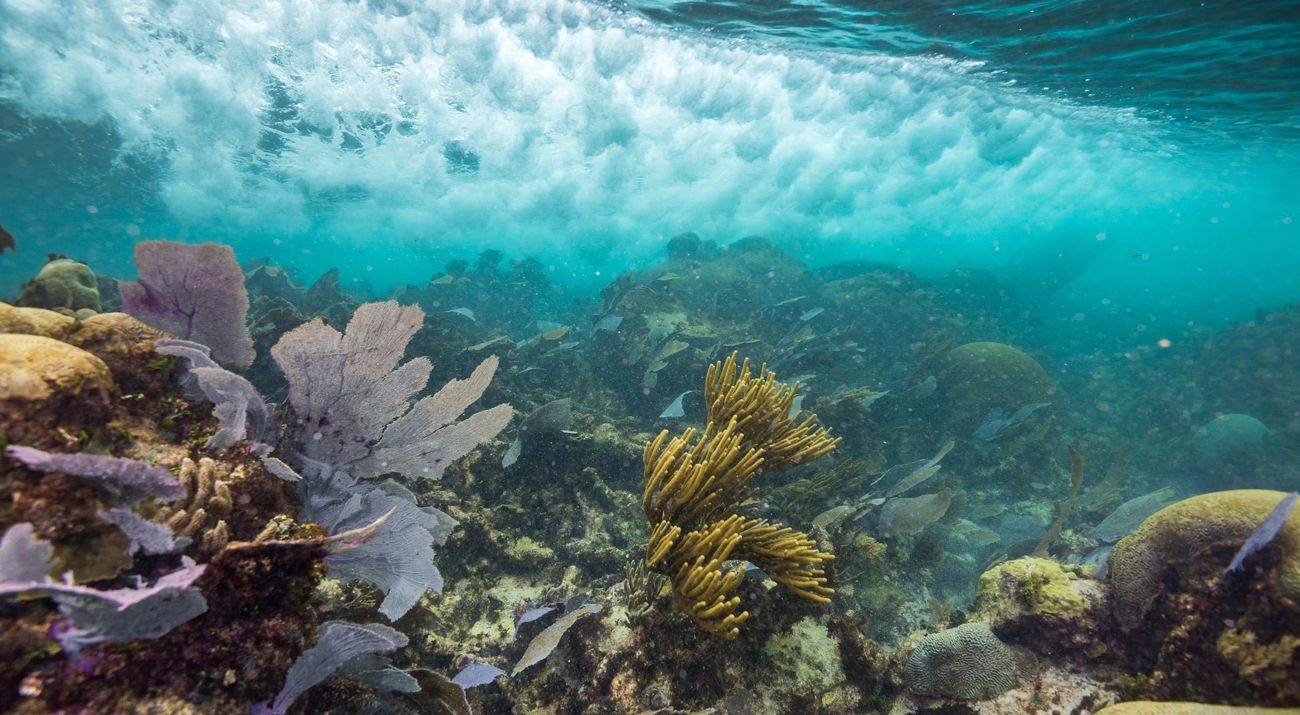Bracing for Impact
On Mexico’s Caribbean coast, volunteer squads of divers are learning to repair the coral reefs that shield the shore.
Winter 2018
A QUARTER OF A MILE OFF THE BEACH in Puerto Morelos, Mexico, tour guide and marine biologist Gustavo Guerrero Limón snorkels through the turquoise water, trailing waist-length dreadlocks.
Like the boatloads of tourists in flippers who speckle the water in three directions, Guerrero is scanning the coral reef below, part of the more than 600-mile-long Mesoamerican Reef that stretches from the tip of the Yucatan Peninsula to Honduras’ Bay Islands.
But the parts that draw his eye aren’t the biggest, the most colorful or the ones surrounded by the most fish. He is looking for corals that are broken, snapped off by strong waves, boat anchors, or the fins and hands of careless divers and snorkelers.
Guerrero is one of a group of eight volunteers that includes marine researchers, consultants and employees of this park, Puerto Morelos Reef National Park, 20 miles south of Cancun. Today is the final exam in a four-day training course on rapid reef repair, conducted by The Nature Conservancy, Mexico's national park service and local reef researchers.
Guerrero and his fellow trainees hope to join a 33-member team of first-response divers called Guardians of the Reef. The divers are part of an ambitious pilot project to rehabilitate a stretch of battered coral reefs along Mexico’s Caribbean coast, in the tourism-dependent state of Quintana Roo that includes the resort hubs of Cancun and Playa del Carmen, as well as smaller cities like Puerto Morelos.
The participants—scientists, tour operators and fishermen—have their work cut out for them. Eighty percent of the living coral along Mexico’s Caribbean coast has been lost or degraded since 1980 by pollution, disease, overfishing and violent storms. Around the world, coral reefs, especially those adjacent to uncontrolled land development and the pollution it causes, are dying.
But coral reefs can be surprisingly resilient, especially with human help. They can be repaired and even strengthened to survive the next storm. It just takes money and some specialized skills that can be taught to experienced divers.
In Quintana Roo, TNC has brought together fishermen, hotel owners, tour operators, government representatives, developers, coral specialists and university researchers to seek a solution to restore the state’s coral reefs. To jumpstart the effort, TNC is leading the training of the first squad of reef-repair divers. In the meantime, Quintana Roo made a decree in March 2018 that it will create a dedicated trust, advised by a committee of local experts including a TNC representative, to pay for environmental management of beaches, dunes and corals—such as emergency repairs made by divers like Guerrero after a large hurricane passes through.
Once Quintana Roo establishes this trust, it will serve as a model for reef-dependent communities around the world. After half an hour, Guerrero and his companions climb back on board the boat. Yellow sprigs of sargassum seaweed cling to wet suits and dreadlocks alike. Now that the targets have been identified, everyone is soon busy getting ready for the second test: making repairs.
Several volunteers gather their reef repair tools: scissors, white zip ties, lengths of black tarred string. Others mix up a batch of cement in a blue bucket, like contractors getting ready to repair a sidewalk. Guerrero and four other divers don scuba gear, and a minute later everyone is back in the water.

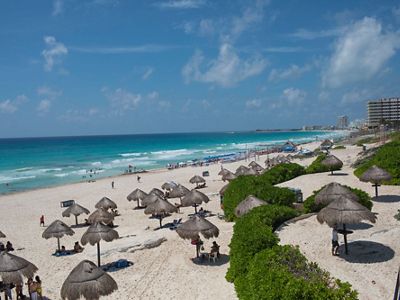
MEXICO’S CARIBBEAN COAST IS HOME TO more than 300 hotels with some 100,000 rooms. Every year approximately 12 million visitors spend $9 billion here, and a significant portion of that spending is directly related to the Mesomerican Reef, in the form of activities like diving, snorkeling and sportfishing tours.
But Mexico’s reefs are suffering. A 2018 report found 50 percent of the country’s reefs in poor or critical condition. Reefs around the globe offer a similarly grim picture: Roughly half of the world’s coral reefs have died in the past 30 years, and scientists predict that most of the rest will be gone by 2100 unless people find a way to reduce pollution, overfishing and climate change.
That will be a catastrophic loss. Even though they fill less than 1 percent of the ocean floor, coral reefs are home to a quarter of the world’s fish species. They provide food and income for 500 million coastal inhabitants. And they protect shorelines from flooding and beach erosion by absorbing up to 97 percent of the energy of incoming waves.
While humanity confronts the long-term threats facing coral reefs, in the short term hurricanes pose a big problem. A damaged reef can’t provide an eff ective shield against waves and is itself more vulnerable to powerful storms. In the Mexican Caribbean, hurricanes are one of the leading causes of reef damage, through the direct pounding action of waves and from debris washed out from the shore. Limbs of elkhorn and staghorn corals snap off like branches in a tornado; brain corals the size of beach balls are knocked over or turned upside down, their outer, living layers shattered. Buried in sediment, their symbiotic algae unable to photosynthesize, the coral fragments will die.
Unless someone fixes them, that is.
Coral First-Aid Class
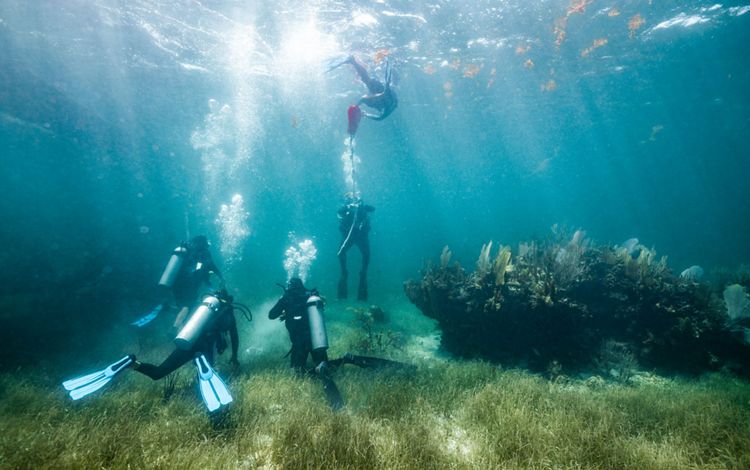
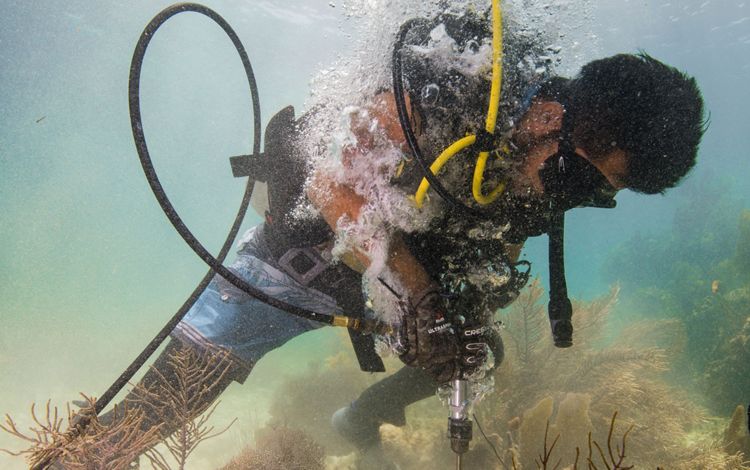
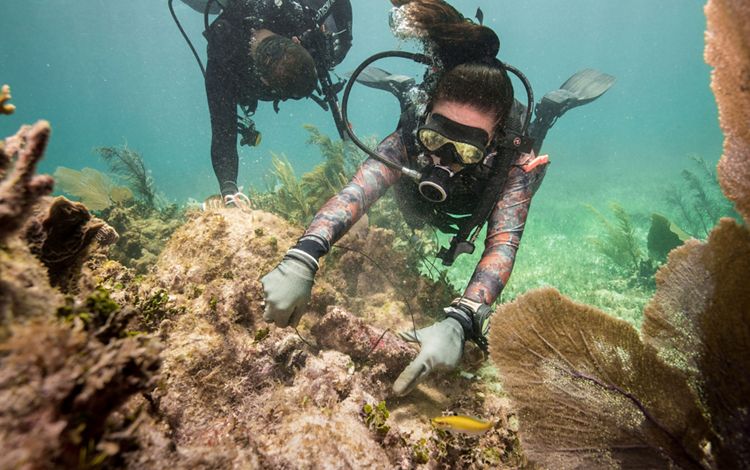
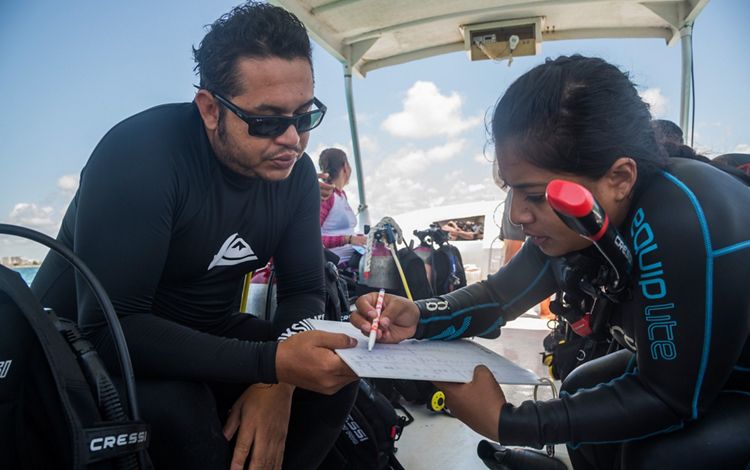
HOTEL OWNERS ON MEXICO’S CARIBBEAN COAST insure their facilities against storm damage, says Miguel Diego, who manages the Zoetry Paraiso Resort near Puerto Morelos. But the beaches outside their facilities have been another story. Storms often sweep away beach sand, forcing property owners to truck in replacement material. It’s expensive to fix, and most owners are deeply concerned about beach erosion, he says. When TNC approached the Cancun and Puerto Morelos Hotel Association about finding a way to repair coral reefs, it embraced the idea as a way to protect precious sand.
“Hotel owners are looking to protect their investment, but we do see the horizon,” Diego says. “We need to be responsible and be good stewards of the resources we have.”
The concept of repairing barrier reefs like the one off Puerto Morelos makes perfect sense, says Fernando Secaira, who leads TNC’s climate and risk resilience initiative in Mexico. “They provide an economically valuable service, they’re at risk and they can be repaired with enough money,” he says.
In fact, repair is one of the most cost-effective options for protecting beaches. Secaira estimates that using the first-response diving team to quickly repair the hardest-hit portions of the national park’s 17 miles of reef after a hurricane will cost between $50,000 and $150,000, compared with the roughly $1 million hotels pay to install half a mile of sea wall or other artificial protection. “From an economic point of view, it makes so much sense,” Secaira says.
And Secaira well knows that time is running out for reefs if such repairs don't take place. Hurricanes are simply a fact of life on the Yucatan Peninsula—and each big storm breaks down part of the remaining 20 percent of living reef. With every loss, the remaining reefs become less and less able to regenerate themselves.
Secaira spent several years brainstorming with state government representatives and coral reef experts about how to sustain the reefs near Puerto Morelos. Those conversations culminated in March 2018 when the state government of Quintana Roo announced it would create a new kind of environmental trust. As envisioned, the Coastal Zone Management Trust will be able to pay for beach dune and reef maintenance, including reef rescue dive teams to jump into action after a major hurricane hits. It will be funded in part by the beach lease tax paid by hotel and resort owners to the federal government.
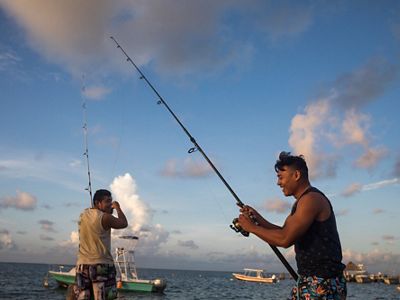
PRIOR TO THEIR FINAL EXAM, the prospective members of the Guardians of the Reef spent one day in the classroom and three days in the water honing their skills. They studied coral ecology and learned how to identify priority areas for repair after a storm.
“You don’t have too much time,” says instructor Calina Zepeda, a TNC restoration specialist who wrote the protocol for the course. “You have to work as fast as you can—damaged parts of the reef can die in 45 days.”
The divers also learned skills such as using pneumatic drills underwater and inserting metal rods to keep larger pieces of reattached coral in place, set like broken bones in people. They practiced with cement and marine epoxy on pieces of dead coral, and learned how to inflate nylon lift bags to move large pieces of coral and storm debris. Even though the participants were all experienced divers or snorkelers, “90 percent of them had never done this work before,” Zepeda says.
Now, 15 feet deep, the divers split up to demonstrate their repair skills on two broken stands of elkhorn coral. Blue tangs, Moorish idols and other fish flit between purple sea fans and coral outcroppings that occasionally break the surface. Guerrero picks up an arm-sized branch of elkhorn coral and finds a nearby spot on the reef where it might fit.
A diver signals one of the three snorkelers circling above to swim down and hand her a large white zip tie. She scrubs the attachment point with a wire brush until it’s clean and white. Then she holds the broken piece in place while Guerrero tries to reattach it with a zip tie.
A task that would be simple on land becomes something else entirely underwater. The gentle undulations of the waves make it difficult to stay in one position. The divers have to be careful not to break any living coral in the process, and they can communicate only through hand signals. It’s like grafting a branch onto a tree after three stiff drinks, with a partner who speaks a different language.
Other divers tie their pieces on with tarred string. Then they apply cement to the junction by hand. Every time someone opens the cement bucket, a gray cloud momentarily envelops the workspace. The gritty paste on the repair site will harden in three days, and in a month—if the reattached piece lives—the coral will grow over the material.
Quote
It’s like grafting a branch onto a tree after three stiff drinks, with a partner who speaks a different language.
Although the national park protects one of the healthiest reef systems in the Mexican Caribbean, with the largest stand of elkhorn coral in the region, “health” is relative, says Zepeda. “The coral in Puerto Morelos is not in the best shape,” she says. Poorly regulated development has caused erosion and pollution. And storms have taken their toll.
Yet Puerto Morelos has so far avoided much of the explosive growth and pollution seen in places like Cancun and Playa del Carmen. Plus, the small city, population 13,000, hosts a campus of the National Autonomous University of Mexico (UNAM) and a research center of the National Fisheries and Aquaculture Institute (CRIAP), making it a good place to launch an experiment in saving reefs. The Conservancy has tapped many experts with different viewpoints to come together around this effort, says TNC’s Zepeda. “We connect groups that sometimes don’t even speak,” she says. “It’s better to work as a team when resources are limited.”
Of particular interest have been experiments conducted by CRIAP’s research center, which is testing a relatively new coral-propagation method called microfragmentation, first developed at the Mote Marine Lab in Florida. Compared with the finger-sized pieces of hard coral that the lab also grows in land-based tanks, microfragments consist of just a few individual polyps, the tiny animals that make up corals. These soft bits of coral grow very quickly on centimeter-sized bits of epoxy in laboratory tanks. The accelerated growth allows biologists to quickly produce plates of coral tissue that can then be attached to artificial structures or even the skeletons of dead corals out in the wild. A microfragment colony should reach sexual maturity faster than corals would in the natural environment, says lead researcher Claudia Padilla Souza. Her team aims to produce about 32,000 microfragments in 2018, she says, and will soon plant its first microfragment colonies in the sea.
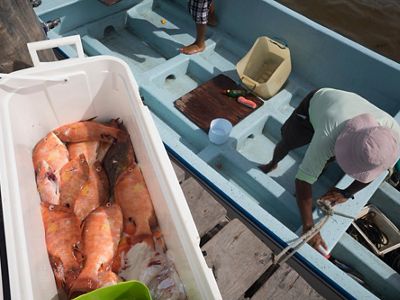
THE DIVERS SURFACE IN A FLOATING PATCH OF sargassum seaweed. Soon they are tossing clumps of it back and forth, evidence of general high spirits, before everyone climbs back into the boat. During the various training sessions, the divers were able to repair half a dozen pieces of coral. The instructors give a positive evaluation, and remind everyone to be careful not to inadvertently kick live coral when making repairs.
The funding plan is likewise gaining traction. Hotel owners are enthusiastic about the new trust, says resort owner Diego, in part because it includes an advisory board that will help ensure that money meant for environmental restoration will actually be used for its intended purpose.
The breakthrough concept, says TNC’s Secaira, is that nature provides a service so valuable to communities on shore that it is worth investing in. Tour boat operators and fishers have always known the value of the corals, he says, but now the restaurant owners and hotel managers and shopkeepers also are rallying around the idea that keeping corals intact is good for the entire tourism economy.
As the divers’ boat motors back to the town dock, Guerrero says that completing the course will help his career and can serve as a source of income during hurricane season, when tourists stay away but the reef rescue crews will be hiring. It could also help him achieve his goal of getting his doctorate studying marine ecology. “Today felt good,” he says. “I feel like I’ve done something meaningful, something real.”
